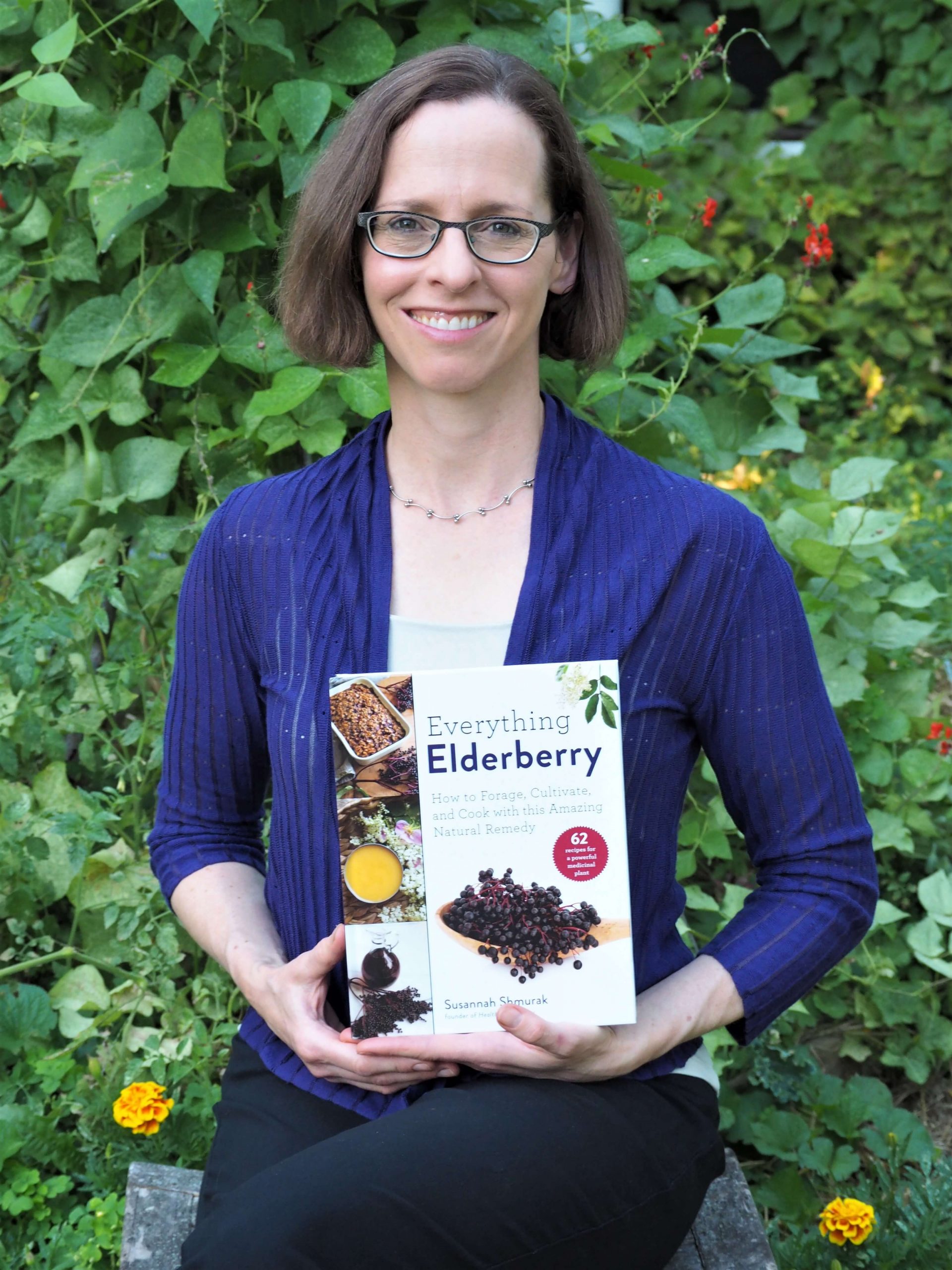Last Updated on March 7, 2025
Eating more plant-based meals and wondering how to get enough protein? Vegan protein sources are a lot easier to find than you might think. Meeting your daily protein requirements isn’t difficult with these top vegetarian and vegan protein sources.
Added bonus: Plant proteins have a much smaller carbon footprint than animal sources, so eating lower on the food chain is doing your bit for the climate as well.
If you’re not eating a completely vegetarian or vegan diet, realize it doesn’t have to be all or nothing. Replacing some of the animal-based protein in your diet with plant sources is still a great move for your health and the planet.
VEGAN PROTEIN BASICS: HOW MUCH DO I NEED?
The jury is still out on exactly how much protein we need. The minimum RDA currently suggests .36 grams of protein per pound of body weight, though many nutritionists think this number is too low for optimum health.
A report published in The American Journal of Clinical Nutrition suggests that somewhere between 15-25% of your daily calories should come from protein. (It’s worth noting the conference this paper came out of was funded by a number of organizations promoting meat and dairy.)
If you’re consuming 2000 calories per day, that would be 300-500 calories from protein, or 75-125 grams per day. Or multiply your weight in pounds by .6 for maintaining muscle or around .7 for weight loss.
Don’t fret too much over counting up every gram of protein. Eating a varied diet and incorporating different protein foods at most meals should have you covered. Read on to see how they can add up over the course of the day.
Now, you probably know that not all sources of protein are created equal. Plant-based proteins aren’t in as readily usable form as protein from animal sources, so getting all your protein from plants takes a bit more know-how.
MAKING THE MOST OF VEGAN PROTEIN SOURCES
Remember that eating plant-based doesn’t mean nothing but salads! Work in some high-protein seeds, nuts, and grains, and you’ll get the protein you need.
If you’ve been relying on animal-based protein, get ready for a whole new world of fabulous recipes! The number of delicious dishes featuring lentils or chickpeas, quinoa, or nuts is astounding. (See links below.)
Don’t concern yourself too much with matching up “complete proteins” (those with all 9 essential amino acids) at every single meal. Experts say eating them over the course of the day will ensure your body gets enough protein.
If you have grains at one meal and beans at another, your body will synthesize what it needs. You’re also getting small amounts of protein from fruits and vegetables.
To make your beans, and seeds as healthful as possible, I highly recommend soaking them first, which can help make nutrients more available. Instructions here.
If you need some help putting together plant-based meals, check out Purple Carrot, a service delivering the ingredients you need for delicious vegan meals right to your door. They’re offering $20 off your first order –just click the banner below.
TOP VEGAN PROTEIN SOURCES: LEGUMES
Legumes (otherwise known as beans) are a top source of protein, so working in chickpeas, lentils, and beans will go long way to meeting your protein needs.
Some easy ideas for working in legumes:
- Top your salads with chickpeas or black beans
- Dip veggies in hummus or add a dollop to your veggie sandwich
- Try nourishing white bean soup or homemade split pea soup.
- Cold lentils are a wonderful base for nutritious salads tossed with whatever veggies you have on hand
(Need some more inspiration for cooking with beans? Check out these mounth-watering recipes featuring beans.)
Some of the highest protein legumes are lentils, cannellini, split peas, kidney beans, black beans, and chickpeas, but other beans are good vegan protein sources as well. In addition to being rich sources of protein, beans have lots of other nutrients, like minerals and vitamins that support a healthy immune system and better sleep, as well as disease-fighting antioxidants.
Here are many other top superfoods to consider.
♦Throw different varieties into a simple broth with some seasonal veggies for a tasty and nourishing soup. Or try any of your favorite beans in this vegetarian chili.
♦ Consider subbing in chickpea flour for other flours in your baking. Don’t worry, your cookies won’t taste like beans! (Recipe ideas here.)
♦ Peanuts are also legumes. Snack on peanuts, use no-sugar peanut butter in your favorite energy ball, or spread it on your toast. Grown-up PB & J with natural peanut butter and all-fruit jam is a protein-rich comfort food.
♦ Whenever possible, buy your beans dry and cook them yourself. You’ll save a lot of money and avoid the chemicals found in canned food.
A word on soy and tofu: Soy protein isolate, which you’ll find in “protein bars” and supplements is a highly-processed food and should be avoided. Tofu and cooked soybeans (edamame) should probably be eaten only occasionally, as there are questions about how their estrogen-like isoflavones may affect hormone function. If you do choose to eat soy, choose organic to avoid the pesticides used heavily on conventional soy crops.
TOP VEGAN PROTEIN SOURCES: GRAINS & ‘PSEUDOGRAINS’
Grains have protein as well, some more than others. You’ll get small amounts from common wheat products, rice, and oats, and more from grains higher in protein (see below). As with beans, when possible, soak your grains to make them as nutritious as possible.
Look at the label on a loaf of whole-grain bread, and you’ll see that your slice of toast has a few grams. Just spread with peanut butter (7 grams), and you’ve met 1/5 of your daily protein needs.
Some especially high-protein grains to look for:
- Spelt (11g)
- Kamut (10g)
- Teff (10g)
- Sorghum (9g)
Many can be served as a side dish, put in stews, or even toasted and eaten like popcorn.
Then there are some grain-like seeds that aren’t technically grains: quinoa, amaranth, and wild rice.
♦ Use quinoa as a side dish (8g per 1 cup cooked) to your favorite lentil recipe or stir some into black bean soup (black beans have 14g per cup), and you have a hefty dose of protein!
♦ Amaranth (9g per cup) can be made into a morning porridge or side dish. Some great recipe ideas here.
♦ Wild rice (6. 5g per cup) is a great high-protein sub for white or brown rice and can be made into salads and added to soups. Wild rice recipe ideas here.
♦ Hemp is another popular high-protein seed (10g per cup) that can be used in numerous ways. I love these ideas from Oh My Veggies.
Some of these less-common grains and seeds can get a little pricey. Amaranth is likely to be cheapest, but you should check the bulk bins of your favorite health food store and compare prices online. You can buy a little at a time, and a pound of most of these will make quite a lot of food. And next to a comparable serving of meat, these grains are still a bargain.
You might also consider growing high protein vegetables in your garden. It’s a great way to get more of your family’s diet, saving you money and providing the highest quality produce for your table.
Another ingredient to consider: nutritional yeast, a high-protein condiment often used in recipes in place of cheese. It has a nice umami flavor that tastes great sprinkled on popcorn, and it can also be used to flavor soups and sauces. (Recipes ideas here.) Often fortified with vitamins, you can find nutritional yeast in the refrigerated section of natural foods stores or order here. Here are some cautions from the Healthy Home Economist if you choose to buy nutritional yeast.
TOP VEGAN PROTEIN SOURCES: NUTS & SEEDS
Many nuts contain significant protein. Top of the list is almonds, which make a great snack or topping for cereals and desserts. Pistachios and cashews are also good choices. (Peanuts are a legume, remember?)
♦ Pumpkin seeds are worth working into snacks, baking, and on your salads. In addition to 5g of protein per ounce, they’re a rich source of magnesium, zinc, and other trace minerals. Use them in place of nuts in pesto.
♦ Sunflower seeds are another great add in or snack, with 6g of protein per ounce plus a host of other vitamins and minerals involved in immune function. They’re probably just a few dollars a pound in the bulk section of your natural foods store, but if you can’t find them there, you can order some here.
♦ Chia seeds contain 4g of protein per ounce, making them a perfect add in to smoothies, baked goods, and more. They can also be the star of a decadent dessert, like this chia pudding.
ADDITIONAL VEGAN PROTEIN SOURCES: FRUITS & VEGGIES
Even your garden veggies have small amounts of protein! Some with the most protein are spinach, broccoli, corn, potatoes, sweet potatoes, and asparagus, each with a couple grams of protein per serving. Mulberries and blackberries also supply more protein than many other fruits.
A banana has a little over 1g of protein as well. Even fruits like apples and peaches have very small amounts of protein.
Need some recipe ideas that use some of these vegan protein sources? Follow my vegan and vegetarian recipe board on Pinterest. I add more mouth-watering recipes to it every day!
Or check out the meal-planning tools at One Green Planet. They have an astonishing array of delicious looking vegan meal ideas.
What are your favorite vegan protein sources? Share in the comments!
Pin to save these vegan protein sources for later!
Photo credits: SEMSEMS, ulleo, rawpixel, PublicDomainPictures

Susannah is a proud garden geek and energy nerd who loves healthy food and natural remedies. Her work has appeared in Mother Earth Living, Ensia, Northern Gardener, Sierra, and on numerous websites. Her first book, Everything Elderberry, released in September 2020 and has been a #1 new release in holistic medicine, naturopathy, herb gardening, and other categories. Find out more and grab your copy here.




 Hi, I'm Susannah, a garden geek, energy nerd, and fan of healthy food and natural remedies. Need some simple, practical solutions for living healthier and greener? You've come to the right place! More about me and my green projects
Hi, I'm Susannah, a garden geek, energy nerd, and fan of healthy food and natural remedies. Need some simple, practical solutions for living healthier and greener? You've come to the right place! More about me and my green projects